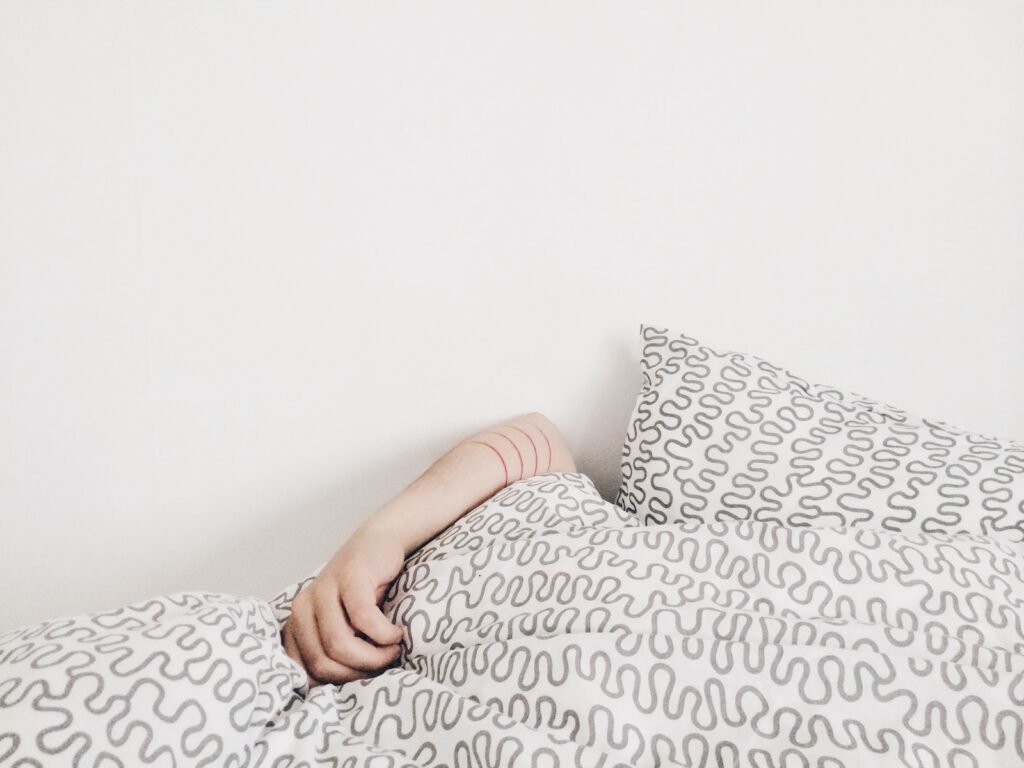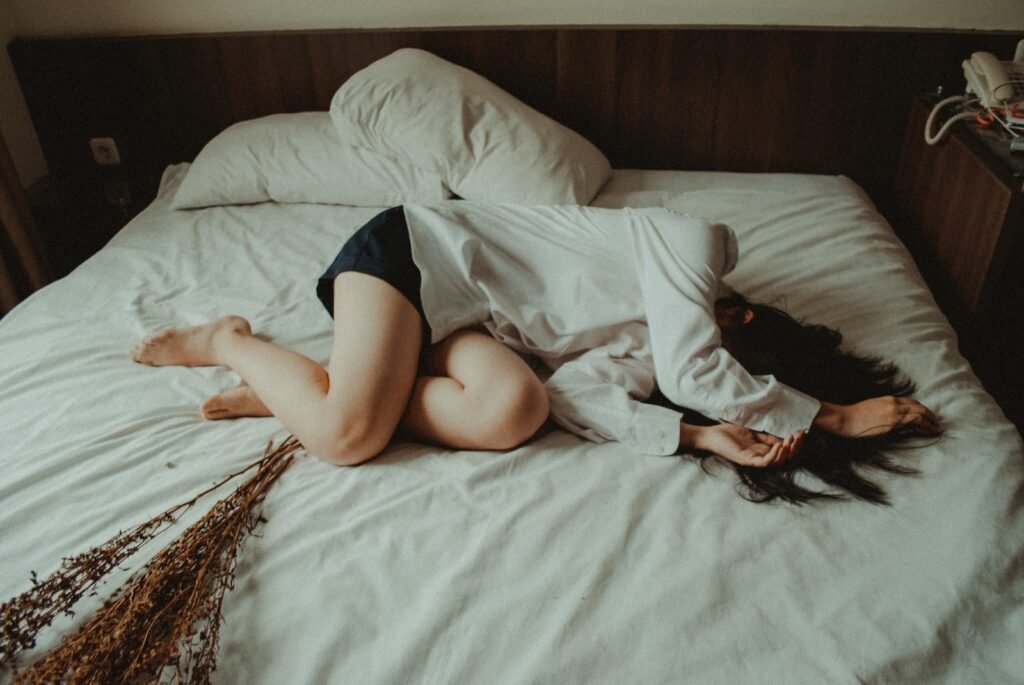3 Methods of How to Make Coffee to Avoid Sleep?
In a world that never sleeps, there are moments when our bodies and minds cry out for a jolt of wakefulness to power through the day or night. Enter the trusty companion of many—a warm, aromatic cup of coffee. This humble beverage, brimming with caffeine, has been the saving grace for countless individuals seeking to stave off the drowsiness that threatens to consume their productivity.
In this blog post, we’ll explore the art of crafting that perfect cup of coffee, and we’ll share tips and techniques on how to make coffee to avoid sleep, ensuring that you stay awake, alert, and ready to conquer whatever comes your way. So, grab your favorite beans, and let’s dive into the world of coffee brewing, right in the comfort of your home.

Understanding the Effects of Coffee on Sleep
Before we delve into how to make coffee that keeps you awake, let’s first understand how coffee affects sleep. Coffee contains caffeine, a natural stimulant that blocks sleep-inducing chemicals in the brain. When consumed, caffeine increases neural activity and promotes wakefulness.
However, it’s important to note that the effects of caffeine can vary from person to person, as some individuals are more sensitive to its effects than others.
Methods of how to Make Coffee to avoid sleep?
1. Choose a Dark Roast
The foundation of strong coffee lies in the type of coffee beans you select. Dark roast coffee beans are your best bet for a robust and intense flavor. These beans have been roasted for a more extended period, which imparts a bold and slightly bitter taste to the coffee. Look for beans labeled as “French Roast,” “Italian Roast,” or “Espresso Roast” for maximum flavor.
2. Use a Brewing Method that Creates a Stronger Cup
The brewing method you choose can significantly impact the strength of your coffee. Here are a few methods that tend to create a stronger cup:
- French Press: The French press allows coffee grounds to steep in hot water for an extended period, extracting maximum flavor and strength. Use coarse coffee grounds and let them steep for about 4-5 minutes.
- Espresso: Espresso is known for its concentrated and bold flavor. Espresso machines force hot water through finely ground coffee, producing a small but potent shot of coffee. If you don’t have an espresso machine, you can make espresso-like shots with an AeroPress.
- Cold Brew: Cold brew coffee is another excellent choice for a strong and smooth cup. For a long time (often 12 to 24 hours), coarsely ground coffee will steep in cold water using this method. The result is a coffee concentrate that you can dilute to your preferred strength.
- Moka Pot: Also known as a stovetop espresso maker, the Moka pot brews strong and rich coffee by forcing water through finely-ground coffee. It’s an excellent option for those who enjoy an espresso-like experience at home.
3. Adjust Coffee to Water Ratio
The coffee-to-water ratio plays a crucial role in determining the strength of your brew. To make your coffee stronger:
- Increase Coffee Grounds: Use more coffee grounds relative to water. A general guideline is one to two tablespoons of coffee per six ounces of water, but you can adjust this ratio to your taste. Experiment by gradually adding more coffee until you achieve the desired strength.
- Reduce Water: If you prefer a concentrated coffee flavor, decrease the amount of water you use while keeping the coffee grounds quantity the same. This results in a bolder brew.
- Extended Brewing Time: If using a method like a French press, extending the brewing time can enhance the strength. Just be cautious not to over-brew, as this can lead to bitterness.
Remember that making strong coffee doesn’t necessarily mean making it undrinkably bitter. The key is finding the right balance between boldness and flavor. With these methods and a bit of experimentation, you can brew a strong cup of coffee that helps you stay awake and satisfies your taste buds.

Alternative Ways to Increase Caffeine Intake
1. Add a Shot of Espresso
If you’re looking for an instant caffeine boost, adding a shot of espresso to your regular coffee can do the trick. Espresso is highly concentrated and packs a powerful caffeine punch. Here’s how you can do it:
- Brew your regular coffee using your preferred method.
- While your coffee is brewing, prepare a shot of espresso using an espresso machine or an AeroPress.
- Combine the brewed coffee with the espresso shot, adjusting the ratio to your desired strength. You can start with a 1:1 ratio and adjust from there.
Adding espresso not only increases the caffeine content but also enhances the overall flavor profile of your coffee, giving it a richer and more complex taste.
2. Know the Optimal Coffee-to-Water Ratios
Understanding the coffee-to-water ratio is essential for maximizing the caffeine content of your brew. While it’s common to use a standard ratio of one to two tablespoons of coffee grounds per six ounces of water, you can adjust this ratio to create a stronger cup:
- Increase the amount of coffee grounds while keeping the water volume the same. For example, you can use two tablespoons of coffee for every four ounces of water to create a stronger brew.
- Experiment with different ratios until you find the one that suits your taste and provides the desired caffeine kick.
Remember that brewing too strong a cup of coffee can lead to bitterness, so it’s essential to strike the right balance between strength and flavor.
3. Use Lighter Roasts for Stronger Flavor
While dark roast coffee beans are often associated with bold flavors, lighter roast beans can also provide a strong and vibrant taste. Lighter roasts tend to retain more of the bean’s natural characteristics and can offer a unique and robust flavor profile. To maximize caffeine intake with lighter roasts:
- Select high-quality, single-origin beans with unique flavor notes.
- Adjust your coffee-to-water ratio to your liking, as lighter roasts may require a slightly different ratio compared to dark roasts.
- Experiment with various brewing methods to highlight the unique flavors of lighter roasts.
Keep in mind that lighter roast coffee may have a higher caffeine content due to the shorter roasting time, which preserves more of the caffeine. This makes it an excellent choice for those seeking a strong coffee experience without the bitterness often associated with darker roasts.
Incorporating these alternative methods and strategies into your coffee routine can help you fine-tune your caffeine intake to meet your needs and preferences. Whether you prefer a bold and intense brew or a milder yet caffeine-rich cup, there are plenty of options to explore.
Managing Coffee Consumption for Better Sleep
1. Set a Coffee Cut-Off Time
One of the most effective ways to prevent coffee from interfering with your sleep is to establish a cut-off time for caffeine consumption. Caffeine has a half-life of around 3 to 5 hours, meaning it takes this long for half of the caffeine to be eliminated from your body. To ensure that caffeine doesn’t disrupt your sleep, consider setting a cut-off time several hours before bedtime. For most people, stopping caffeine intake around 2 PM is a reasonable guideline.
By giving your body enough time to metabolize and eliminate caffeine, you reduce the risk of experiencing its stimulating effects when you’re trying to wind down for the night.
2. Hydrate Properly Throughout the Day
Proper hydration is key to managing your coffee consumption effectively. When you’re well-hydrated, you may find that you’re less reliant on caffeine to stay alert during the day. Here are some tips for keeping well-hydrated:
- Start your day with a glass of water: Before reaching for your morning cup of coffee, drink a glass of water to kickstart hydration.
- Alternate with water: Whenever you have a cup of coffee, follow it with a glass of water. This helps counteract the diuretic effect of caffeine, which can lead to dehydration.
- Stay hydrated throughout the day: Continue to drink water consistently throughout the day to maintain hydration levels.
By staying hydrated, you can potentially reduce your need for excessive coffee consumption and avoid its disruptive effects on your sleep.
3. Consider Alternatives like Decaf
If you enjoy the taste of coffee but want to minimize your caffeine intake, consider switching to decaffeinated coffee. Decaf coffee offers a similar flavor experience without the stimulating effects of caffeine. Here are some tips for making the most of decaf coffee:
- Choose high-quality decaf beans: Opt for decaffeinated coffee made from quality beans to ensure a flavorful cup.
- Experiment with brewing methods: Adjust your brewing method and coffee-to-water ratio to maximize the flavor of your decaf coffee.
- Be mindful of additives: Avoid adding sugary or highly caffeinated additives to your decaf coffee, as they can negate the purpose of choosing decaf.
Switching to decaffeinated coffee can be a smart choice if you want to enjoy a coffee experience without the risk of caffeine-induced sleep disturbances.
In conclusion, managing your coffee consumption with these strategies can lead to better sleep and overall improved well-being. By setting a coffee cut-off time, staying hydrated, and considering alternatives like decaf, you can strike a balance between enjoying your coffee and getting the restful sleep you need.

Creating an Ideal Sleeping Environment
1. Establish a Consistent Sleep Schedule
One of the most effective ways to improve your sleep quality is by establishing and maintaining a consistent sleep schedule. Your body has a natural internal clock known as the circadian rhythm, which regulates your sleep-wake cycle. Disrupting this rhythm by irregular sleep patterns can lead to poor sleep quality. Here’s how to create a consistent sleep schedule:
- Set a Fixed Bedtime and Wake-Up Time: Determine a specific time to go to bed and wake up each day, even on weekends. Consistency reinforces your body’s internal clock.
- Gradual Adjustments: If your current sleep schedule differs significantly from your desired one, make gradual adjustments over several days or weeks to avoid sudden disruptions.
- Limit Naps: Excessive daytime napping can interfere with nighttime sleep. If you must snooze, do it early in the day and for no more than 20 to 30 minutes.
- Be Patient: It may take some time for your body to adapt to a new sleep schedule. Be patient and persistent in sticking to your routine.
2. Create a Calm and Comfortable Sleep Environment
Your sleeping environment has a major impact on how well you sleep. Here are some tips for creating a calm and comfortable sleep environment:
- Optimal Room Temperature: Keep your bedroom at a comfortable temperature, usually between 60 to 67 degrees Fahrenheit (15 to 20 degrees Celsius). In general, a colder room is better for sleeping.
- Darkness: Make your bedroom as dark as possible. Consider using blackout curtains to block out streetlights and early morning sunlight. Eliminate or cover any sources of artificial light, such as electronics with LED displays.
- Comfortable Bed: Invest in a comfortable mattress and pillows that support your sleeping posture. Mattresses and pillows have a significant impact on your sleep quality and overall comfort.
- Quietness: Minimize noise disruptions by using earplugs, a white noise machine, or soothing background sounds, such as rainfall or ocean waves if that helps you sleep.
- Space Without Clutter: Keep your bedroom neat and clutter-free. A clean and organized space can promote a sense of calm and relaxation.
- Aromatherapy: Consider using calming scents like lavender through essential oils or diffusers to create a soothing atmosphere.
- Limit Your Screen Time: Put your phones, tablets, laptops, and TVs away at least an hour before bed. Your body cannot effectively manufacture the hormone melatonin when it is exposed to the blue light that screens emit.
By establishing a consistent sleep schedule and creating a calm and comfortable sleep environment, you can significantly improve the quality of your sleep. These steps help align your body’s natural rhythms and ensure that you get the restorative rest you need for optimal physical and mental well-being.
Frequently Asked Question About How to Make Coffee to avoid sleep?
Can I drink coffee to avoid sleep?
Yes, drinking coffee can help you stay awake and combat sleepiness due to its caffeine content. Caffeine is a natural stimulant that temporarily boosts alertness and reduces the perception of fatigue. However, it’s essential to consume coffee in moderation and be mindful of the timing to avoid disrupting your sleep patterns.
What can I add to coffee to not sleep?
To enhance the wakefulness-promoting effects of coffee, you can add ingredients like a shot of espresso for extra caffeine or a dash of cinnamon for flavor without the sugar content. Additionally, some people add a small amount of coconut oil or MCT oil for sustained energy without the crash associated with sugary additives.
How does coffee make you less sleepy?
Coffee makes you less sleepy primarily due to its caffeine content. Caffeine acts as a central nervous system stimulant, blocking the effects of adenosine, a neurotransmitter that promotes sleep and relaxation. By inhibiting adenosine, caffeine increases alertness, focus, and energy, helping you feel less sleepy temporarily.
Can Nescafe prevent sleep?
Nescafe, like other coffee brands, contains caffeine, which can help prevent sleep by reducing sleepiness and promoting wakefulness. However, the effectiveness of Nescafe or any coffee brand depends on factors like the amount of caffeine in the coffee and your individual sensitivity to caffeine. As with all caffeinated beverages, it’s essential to consume Nescafe in moderation to avoid potential side effects.
What can I drink to avoid sleep?
In addition to coffee, there are several other caffeinated and non-caffeinated beverages you can consume to help avoid sleep, including:
- Tea (e.g., black tea, green tea) for a milder caffeine boost.
- Energy drinks designed for alertness, although they should be consumed sparingly due to their high caffeine content.
- Water to remain hydrated since weariness can be caused by dehydration.
- Herbal teas with invigorating ingredients like peppermint or ginseng, which can provide a mild energy lift without caffeine.
How much coffee is needed to stay awake?
The amount of coffee needed to stay awake can vary widely depending on factors like individual tolerance to caffeine, the strength of the coffee, and your current level of fatigue. Generally, a moderate amount of caffeine, equivalent to about 100-200 milligrams (approximately one 8-ounce cup of brewed coffee), can help combat sleepiness for most people.
However, it’s important not to exceed your personal caffeine tolerance, as excessive caffeine intake can lead to jitteriness, increased heart rate, and disrupted sleep later on. It’s advisable to start with a moderate dose and adjust as needed.

Conclusion
In conclusion, mastering the art of how to make coffee to avoid sleep can be a game-changer in those moments when fatigue threatens to overwhelm us. Coffee, with its caffeine-packed punch, is a reliable companion in our battle against drowsiness.
By brewing a perfect cup of coffee at home and following these tips to help you harness the power of caffeine, you can stay alert and focused whenever you need that extra boost.
Remember, it’s not just about the coffee itself; it’s about the quality of your beans, the precision in your measurements, and the timing of your sips. When done right, your cup of coffee can be a delightful and effective solution to keep sleep at bay without sacrificing your health or sleep patterns.
So, whether you’re facing a demanding workday, a challenging study session, or a long drive ahead, brew your cup of coffee with care, and let it be your trusted companion on your journey to staying awake and alert. By following these steps on how to make coffee to avoid sleep, you’ll have the perfect tool in your hands to conquer those moments of drowsiness and seize the day with renewed energy and vitality.
